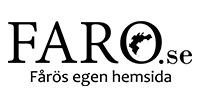Ullahau is a large, horseshoe-shaped sand dune that is part of the large flying sand area that covers almost the entire Avanäset. At most, the dune rises about 15 meters above the surrounding area.
The Ullahau dune probably began to form in the first half of the 18th century, probably as a result of excessive logging and grazing. On its way south, the sand suffocated large areas of forest, and even some arable land was covered with sand. In order to stop the flight of sand, intensive planting work was started at the beginning of the 20th century, and only a few decades later the migration of the dune had largely been stopped. Nowadays, Ullahau is largely covered with forest - mainly pine forest - and the open sandy areas cover a total of only about 40 hectares. The flora in Ullahau is consistently poor in species. On the open sandy areas, the vegetation is dominated by lichens and mosses as well as grass and semi-grass. Here and there between the tufts of grass stand single specimens of flock fibble or monk. Inside the forest, the ground is often covered by heather or blueberry rice. The open sandy lands of Ullahaus constitute a very special habitat with an extreme microclimate in many respects. This leaves its mark on, among other things, the area's insect fauna, which is unusually rich in heat-demanding dryland species. These include, among other things, several species of thistles, some of which, including the large grasshopper, are extremely rare in our country. In Ullahau you can also meet all three of our Swedish species of ant lions and above all their larvae, the ant lions. The ant lion lies buried in the sand at the bottom of a funnel-shaped catch pit. When an ant or some other small insect happens to fall into the pit, the ant lion sprinkles sand on its victim so that it slides further and further down to the bottom of the pit. Finally, the ant lion grabs its prey with its long, spiny jaws and drags it down into the sand.Hiking trails:
At Ulla Hau there are 2 well-marked hiking trails. Maps for these are available at the car park. Length of the sections: White/blue – 1.6 km. White/red – 2.9 km.Regulations
For everyone's well-being and in order to maintain the reserve's natural and cultural values, it is important that all visitors show consideration. In addition to the right of public access, it is not permitted to:-
- drive a motor vehicle,
-
- camping or setting up a caravan,
-
- make fire,
-
- put up a board, sign or poster,
-
- collect insects.
-
- break twigs, fell or otherwise damage living or dead trees or shrubs,









